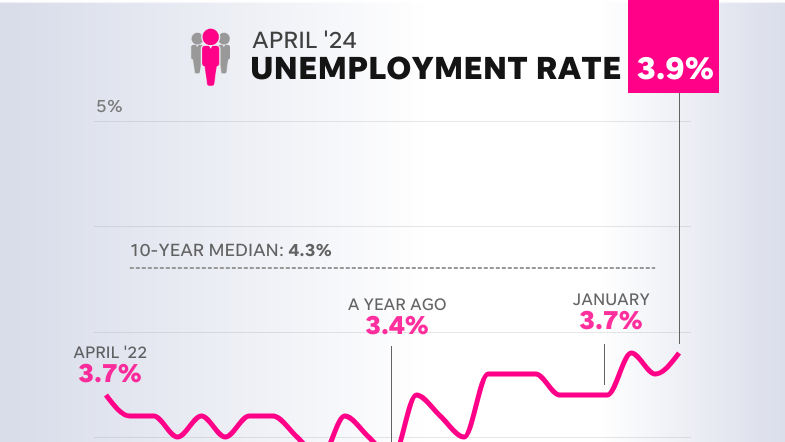Panicked about plunging stock market? You can beat Wall Street by playing their own game.
Despite a 1,000-point tumble on the Dow and the worst day for the S&P 500 since 2022 on Monday, stocks have had a good run in 2024.
The S&P 500 is still up above 10%, while the Nasdaq has moved 11% higher this year. Just weeks ago, stocks were hitting all-time highs.
Wall Street investors are a panicky lot and they’re always asking, “What have you done for me lately?” Yesterday’s gains are not enough – they need tomorrow’s. When those gains look uncertain, traders hit the sell button and ask questions later.
But individual investors don’t have to play that short-term game. In fact, it’s much better if they don’t, because they’re primed to lose, going against high-powered computerized traders and more research than an individual could gather in a lifetime. The good news: Individuals can still beat Wall Street by playing their own game – the one where the pros are at a disadvantage.
Are we headed for a recession? The key concerns moving the market.
Markets are regularly shaken up, like a snow globe. According to brokerage Charles Schwab, the stock market experienced a drop of at least 10% in 10 of the 20 years between 2002 and 2021.
In fact, the S&P 500 had one of these “corrections” just last year, between July and October.
So what’s shaking up investors this time? They are rattled by a few things:
- The latest unemployment and job reports came in cool, and the economy seems to be slowing after a couple years of defiantly strong growth.
- Investors fear that the Federal Reserve may have held interest rates too high for too long in its bid to tamp down inflation, and that the economy could be entering the beginning stages of a recession.
US economy needs help growing:Americans feel the economy is working against them. How we can speed up economic growth.
- Another key driver is a high-finance maneuver called the "carry trade." Some wealthy investors borrowed money in Japan, where interest rates are near zero and then invested it in the United States, where rates are much higher. For them, it looked like easy money. Then the Bank of Japan raised interest rates to 0.25%, forcing these traders to race to the exits so they could avoid a loss. The selling led to more selling – and stocks plummeted.
- Predictably, the market’s tech stocks – which led its run to all-time highs – have flopped recently. Big bellwethers such as Amazon, Microsoft and Nvidia are well off their highs, with megacap stocks shedding more than a trillion dollars in market cap as trading opened on Monday, according to CNBC.
These concerns are real. The economy may or may not enter a recession, but you’re not likely to outguess Wall Street, which is armed with tons of sharp analysts and all the money in the world to figure it out. You not only have to guess where the economy’s going but whether it’s priced into stocks and by how much.
Even so, you still have tools to “beat the Street.”
How can individuals beat stock market chaos? Stick to index funds.
With all its talent and money, Wall Street can play a game it’s good at – trading stocks for short-term profit. Well-financed investors can have a read on stocks months before they show signs of weakness.
Little wonder the folks at home on their laptops can’t consistently win this game.
When should I retire?It may be much later in life than you think.
Where individuals can consistently beat the vast majority of investors is by playing the long-term, buy-and-hold game with index funds – even if they’re armed with little knowledge.
The data is clear: The S&P 500 index, which includes hundreds of America’s top companies, outperforms the vast majority of the pros, whose funds compete with the index. About 80% of funds have underperformed the S&P benchmark, according to S&P Dow Jones Indices.

And just what kind of returns are we talking? Over time, the S&P 500 has delivered about 10% returns annually on average. And in the past 10 years, the return has even been a bit higher, about 12.8% annually.
To get these returns and outperform the pros, individual investors would need to simply buy an S&P 500 index fund – available at all brokers – and then hold on. While the plan is simple, it’s not easy.
That’s because the hardest part is holding on through the tough times, like we’re having now – and waiting for the market to rise again, like it did through 2023 and the first half of 2024. You’ll be tempted to sell when stocks fall, as you scramble to avoid the pain of a losing trade.
Wall Street is not set up to play the long-term game, however. Fund managers need to hit quarterly and annual performance targets.
When investors sell a fund, these managers have no choice but to sell the stocks held within the fund, meaning they often sell low and then buy back in after the market has risen.
Don't let short-term market pains eat into your long-term gains
While tough times may last for a while, they may be gone quickly, too. Do you even recall that 10% drop just last year? Probably not. Don’t let the short-term noise get to you.
Stick to a long-term investing plan where you have an edge, where a market downturn becomes a buying opportunity. By reframing things, individual investors can win the buy-and-hold game that much of Wall Street is unable to play.

James F. Royal, Ph.D., is a principal writer and editor at Bankrate, where he covers investing and wealth management. He is also the author of "The Zen of Thrift Conversions."
Disclaimer: The copyright of this article belongs to the original author. Reposting this article is solely for the purpose of information dissemination and does not constitute any investment advice. If there is any infringement, please contact us immediately. We will make corrections or deletions as necessary. Thank you.







